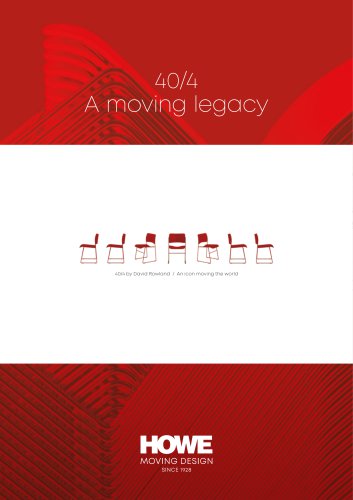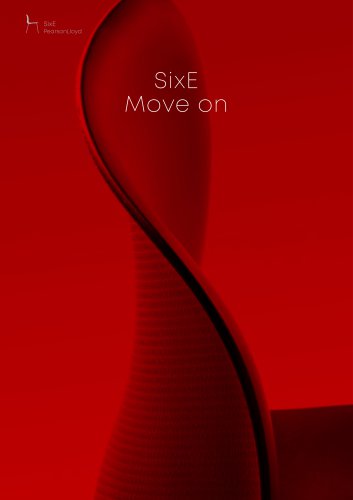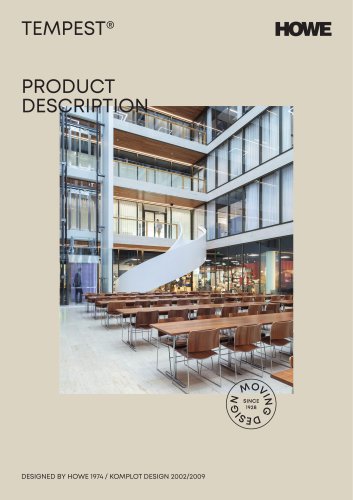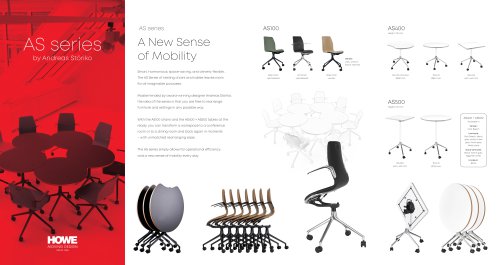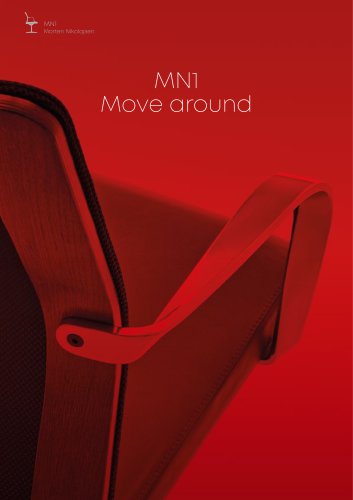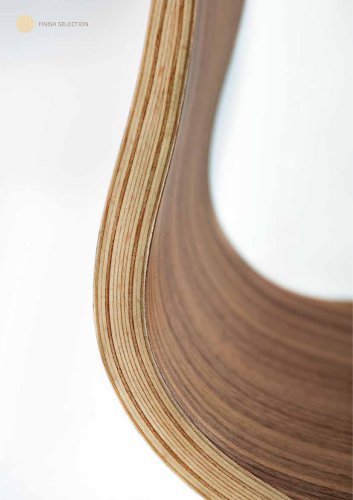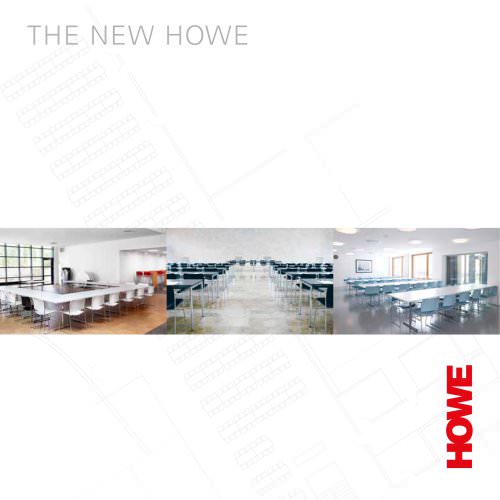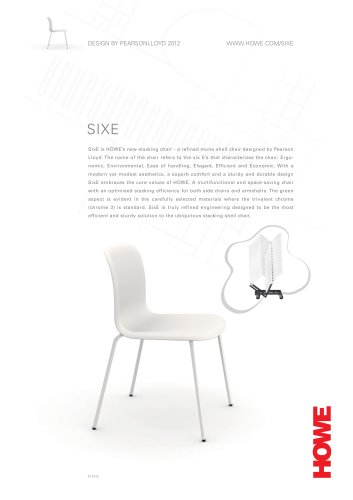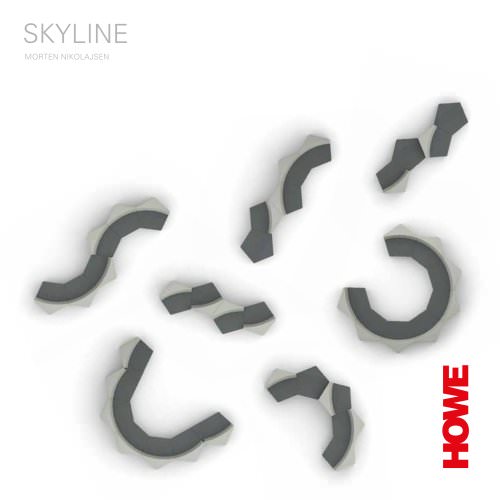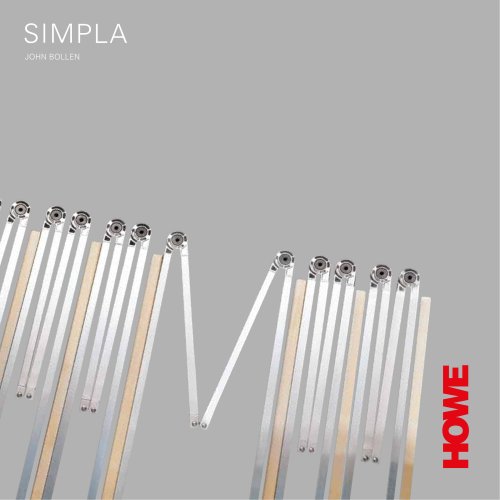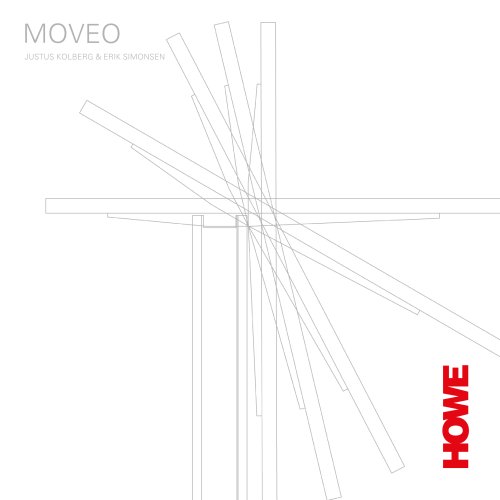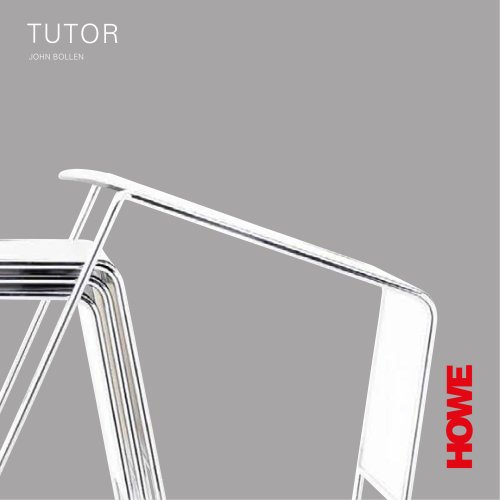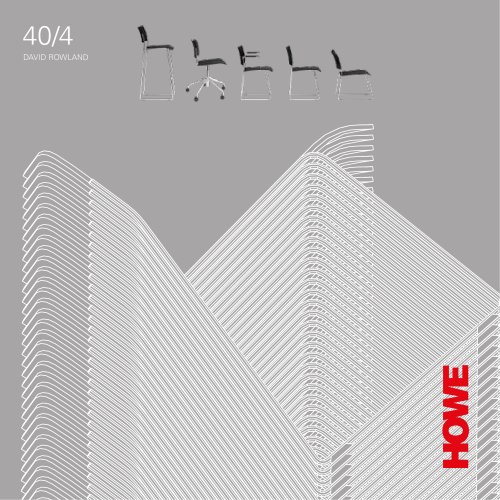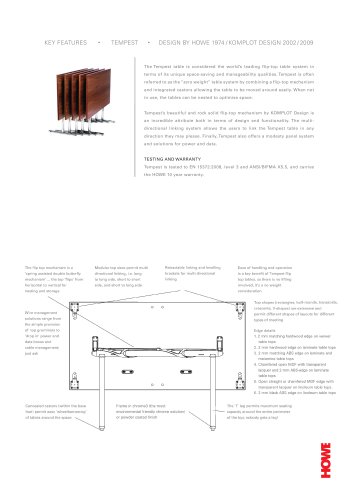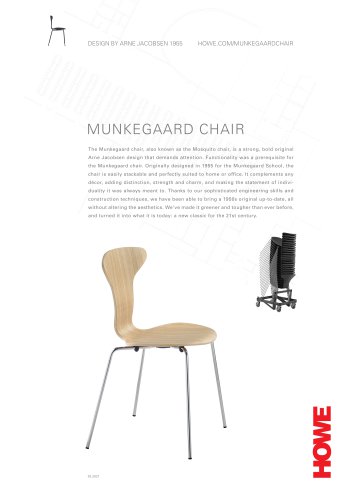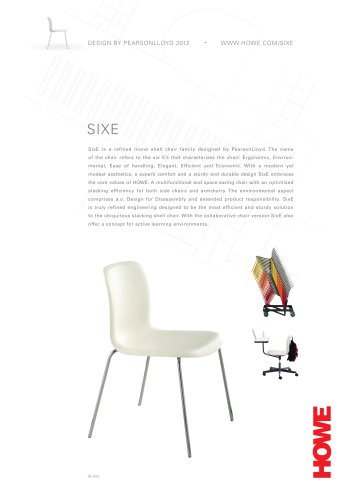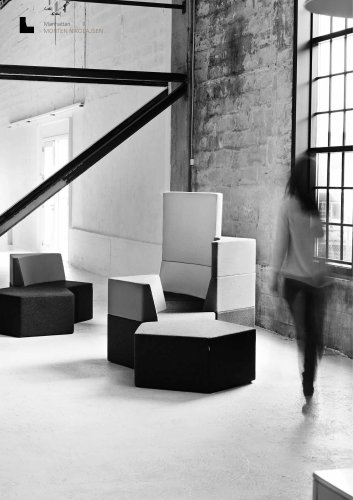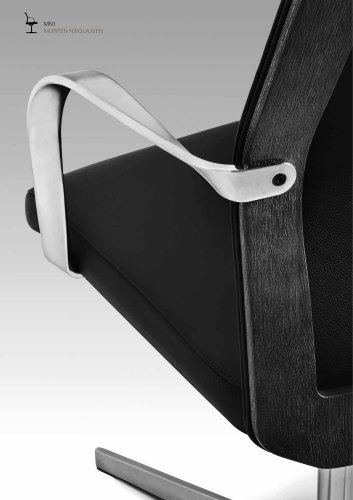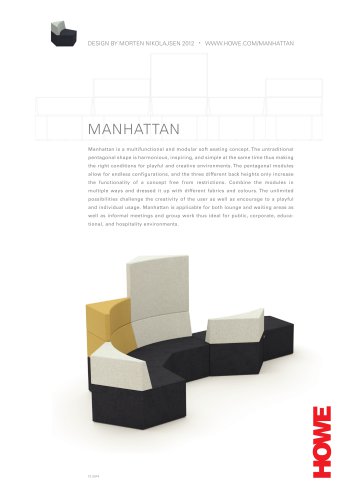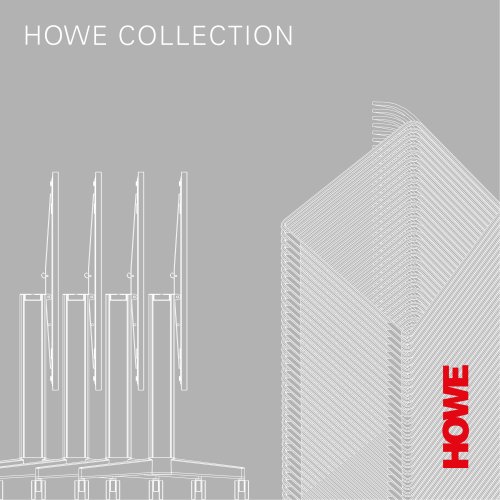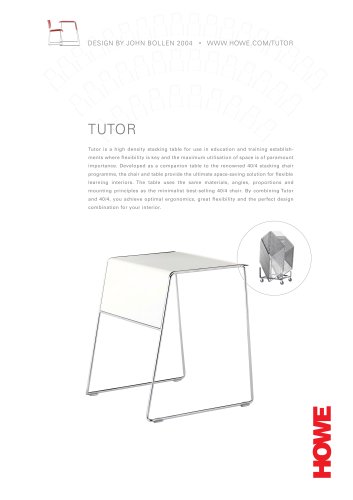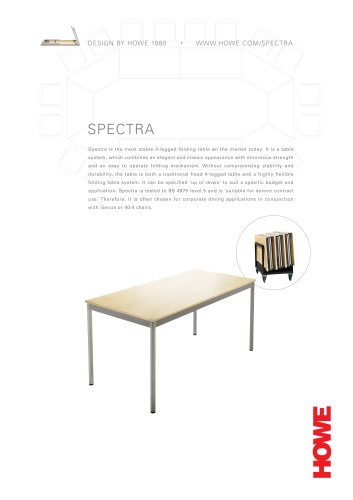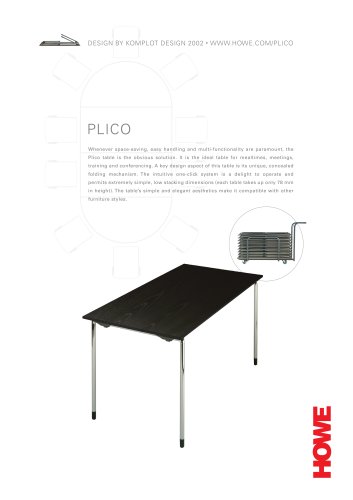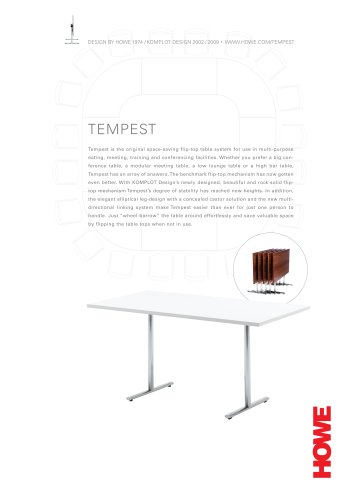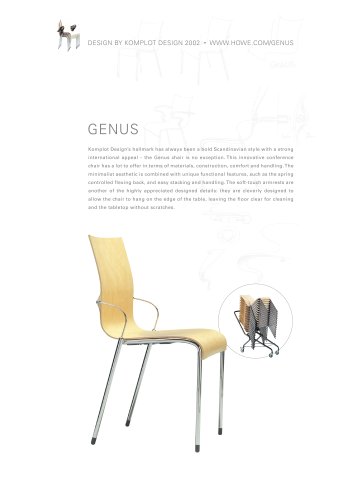
Catalog excerpts

DAVID ROWLAND
Open the catalog to page 1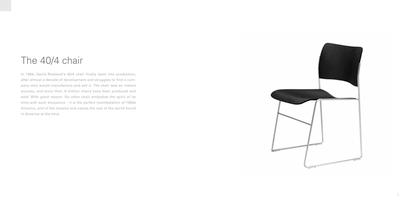
The 40/4 chair In 1964, David Rowland’s 40/4 chair finally went into production, after almost a decade of development and struggles to find a company who would manufacture and sell it. The chair was an instant success, and since then, 8 million chairs have been produced and sold. With good reason. No other chair embodies the spirit of its time with such eloquence - it is the perfect manifestation of 1960s America, and of the dreams and values the rest of the world found in America at the time. 3
Open the catalog to page 3
The first true stacker The 40/4 is lauded as the first truly stackable chair, and its name is an expression of that fact: 40 chairs can be stacked within 4 feet. It is a minimalist construction, built of slender steel rods, and originally with a sheet metal seat and back. 4 5
Open the catalog to page 4
Timeless design For obvious reasons, there has never been a slow-down in the popularity of the 40/4. It is used in historic and modern public buildings across the world, and is preferred by many leading architects. Like the 40/4, most timeless objects are perfect expressions of a specific age that eventually transcend the period of their making, and become the very essence of their materials and function. The Barcelona and Thonet-chairs are similar classics. The 40/4 is the ultimate stackable chair, almost a template which has 6 7 St. Paul’s Cathedral, UK set the standard for contract...
Open the catalog to page 5
Instant recognition In 1964 David Rowland's 40/4 chair was awarded the Grand Prix at the prestigious Milan Triennale. David Rowland is one of only two Americans to receive this award, the other being Buckminster Fuller for his Geodesic Domes. The Grand Prix was the first of many design awards it has received. Today the 40/4 is on view in design collections and museums around the globe, revered as a modern design classic by prestigious institutions the world over. diploma di gran premio aella Giuna Superior e Prof Bruno Malajoh deUa Triennale oi Mnano
Open the catalog to page 6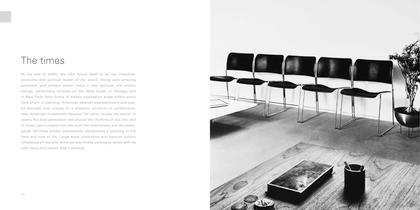
The times At the end of WWII, the USA found itself to be the industrial, economic and political leader of the world. Along with amazing economic and military power came a new spiritual and artistic energy, particularly focused on the West Coast, in Chicago and in New York. New forms of artistic expression arose within every field of art: in painting, American abstract expressionism and popart brought new energy to a stagnant art-form; in architecture, new American modernism became the norm across the world; in poetry the beat generation introduced the rhythms of real life; and in music,...
Open the catalog to page 7
A peaceful mission The values of the post WWII culture of aspiration are easily visible in 40/4. And perhaps best expressed in David Rowland’s motivation for designing the chair in a $40-a-month one-room apartment in Upper Manhattan: “In 1945 I completed 24 bombing missions over Europe. Accompanying the dramatic strains of war, including some missions of 12-hour length, was the fact that the seats were beastly uncomfortable. I resolved to do something about that if I ever returned home safely.” 12 13
Open the catalog to page 8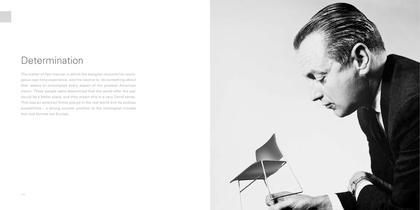
Determination The matter-of-fact manner in which the designer recounts his courageous war-time experience, and his resolve to ’do something about that’ seems to encompass every aspect of the postwar American vision. These people were determined that the world after the war would be a better place, and they meant this in a very literal sense. This was an ambition firmly placed in the real world and its endless possibilities - a strong counter position to the ideological morass that had burned out Europe. 14 15
Open the catalog to page 9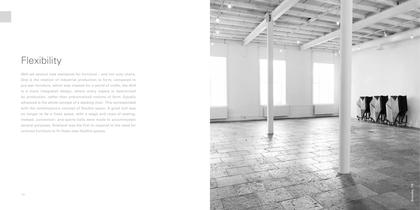
Flexibility 40/4 set several new standards for furniture - and not only chairs. One is the relation of industrial production to form; compared to pre-war furniture, which was created for a world of crafts, the 40/4 is a more integrated design, where every aspect is determined by production, rather than preconceived notions of form. Equally advanced is the whole concept of a stacking chair. This corresponded with the contemporary concept of flexible space. A great hall was no longer to be a fixed space, with a stage and rows of seating. Instead, convention- and sports halls were made to...
Open the catalog to page 10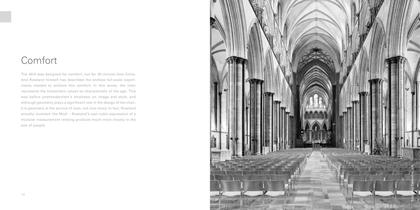
Comfort The 40/4 was designed for comfort, not for 30 minute time limits. And Rowland himself has described the endless full-scale experiments needed to achieve this comfort. In this sense, the chair represents the humanistic values so characteristic of the age. This was before postmodernism’s emphasis on image and style, and although geometry plays a significant role in the design of the chair, it is geometry at the service of man, not vice-versa. In fact, Rowland actually invented ‘the Mod’ - Rowland’s own cubic expression of a modular measurement relating products much more closely to...
Open the catalog to page 11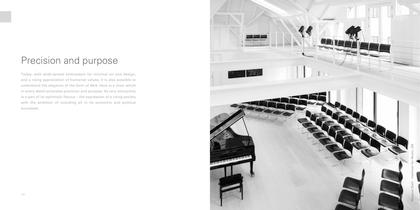
Precision and purpose Today, with wide-spread enthusiasm for minimal art and design, and a rising appreciation of humanist values, it is also possible to understand the elegance of the form of 40/4. Here is a chair which in every detail emanates precision and purpose. Its very anonymity is a part of its optimistic flavour - the expression of a rising society with the ambition of including all in its economic and political 20 21 Mogens Dahl - Institute for Music, DK successes.
Open the catalog to page 12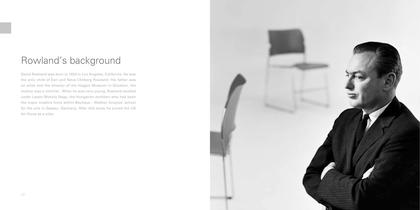
Rowland’s background David Rowland was born in 1924 in Los Angeles, California. He was the only child of Earl and Neva Chilberg Rowland. His father was an artist and the director of the Haggin Museum in Stockton. His mother was a violinist. When he was very young, Rowland studied under Laszlo Moholy-Nagy, the Hungarian architect who had been the major creative force within Bauhaus - Walther Gropius’ school for the arts in Dessau, Germany. After this study he joined the US Air Force as a pilot. 22 23
Open the catalog to page 13
Principia and Cranbrook After his service as a pilot Rowland went on to major in science from Principia College. Following graduation, he then began studies at the highly esteemed Cranbrook Academy in Michigan where he obtained a Master of Fine Arts Degree in Industrial Design in 1951. Cranbrook was a gathering place for the brightest minds in American design - people like Buckminister Fuller, Serge Chermayeff, the Eames couple, Florence Knoll and Harry Bertoia. It was they who created the new language of form which would come to dominate the decades after WWII. The 40/4 is very much a...
Open the catalog to page 14All HOWE catalogs and technical brochures
-
40/4 A moving legacy
68 Pages
-
SixE Move on
33 Pages
-
TEMPEST®_2024
7 Pages
-
40_4_description_uk_0
8 Pages
-
mn100meeting_description_f
6 Pages
-
Howe Collection Flyer 2021
10 Pages
-
AS series
2 Pages
-
AS400 + AS500
5 Pages
-
Simpla Moving simplicity
13 Pages
-
Munkegaard chair A bold move
11 Pages
-
Moveo Made to move
11 Pages
-
MN1 Move around
17 Pages
-
MN table series Natural movement
15 Pages
-
Essential Workspace
2 Pages
-
FINISH SELECTION
8 Pages
-
Simpla
11 Pages
-
MN1
5 Pages
-
40/4
8 Pages
-
Munkegaard
11 Pages
-
CREDENZA 1
12 Pages
-
SPAGHETTI WALL
3 Pages
-
STRAP
2 Pages
-
HOWE in North America
11 Pages
-
SixE Brochure
10 Pages
-
Lounge
2 Pages
-
The Tongue Arne Jacobsen
23 Pages
-
HOWE Collection 2013
36 Pages
-
SixE description
4 Pages
-
Skyline brochure
10 Pages
-
Usu brochure
10 Pages
-
Simpla brochure
10 Pages
-
Moveo brochure
10 Pages
-
Plico brochure
10 Pages
-
Tutor brochure
10 Pages
-
40_4 brochure
19 Pages
Archived catalogs
-
TEMPEST
1 Pages
-
2021 MUNKEGAARD CHAIR
4 Pages
-
40/4 A moving legacy
37 Pages
-
THE TONGUE
3 Pages
-
SIXE
6 Pages
-
Manhattan
11 Pages
-
MN1_2016
17 Pages
-
2014 MANHATTAN
4 Pages
-
MUNKEGAARD CHAIR
2 Pages
-
HOWE Collection 2012
23 Pages
-
USU
4 Pages
-
40_4
8 Pages
-
Tempest brochure
13 Pages
-
TUTOR
4 Pages
-
SPECTRA
5 Pages
-
PLICO
5 Pages
-
TEMPEST_2009
8 Pages
-
MOVEO
7 Pages
-
GENUS
5 Pages
-
MOTIO
5 Pages
-
Tutor features and benefits
3 Pages


